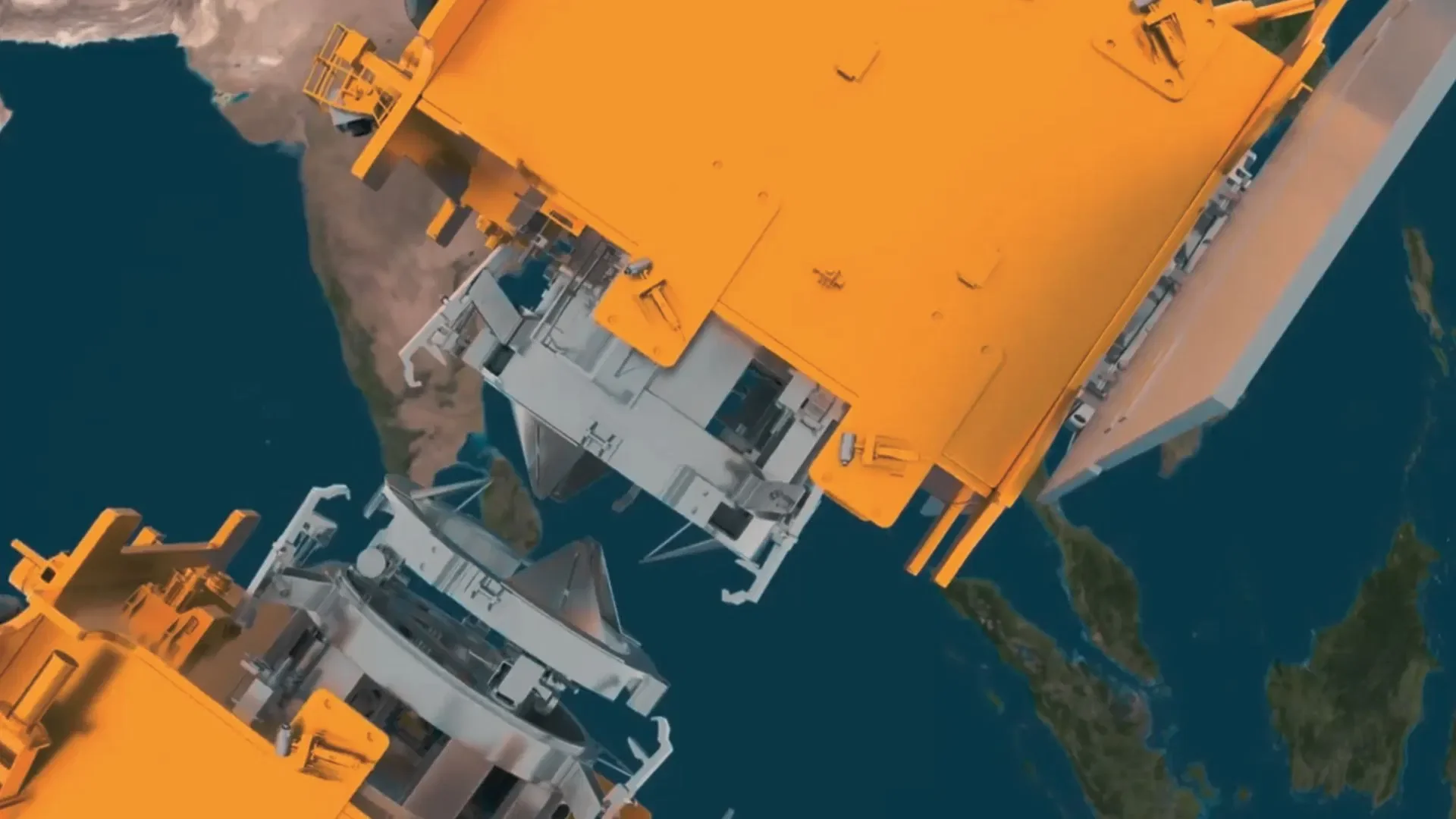Docking as a Market: ISRO’s SpaDeX and the New Supply Chain for On-Orbit Ops
Illustration of the SpaDeX satellites initiating docking procedure.
Credit: ISRO
A successful demonstration turns interfaces, sensors and software into purchasable products
India’s Space Docking Experiment (SpaDeX) moved docking from plan to proof in January 2025, with a government communiqué confirming a successful operation and follow-on undocking imagery posted by ISRO. A second phase is under consideration. Beyond national pride, SpaDeX pushed another domino in the commercial space economy: docking ceases to be just a programme capability and becomes a market of parts, software, standards and training.
What sells first when docking becomes routine? Sensors and software. Guidance, navigation and control stacks that fuse cameras, lidar and star-trackers; actuator packages that handle micro-impacts at contact; and autonomy modules that cope with lighting, plume impingement and false cues. The more vehicles practice docking, the more they demand interoperable mechanisms, fault-tolerant algorithms and certification regimes that regulators can recognise without bespoke studies every time. In short: the supply chain professionalises.
Training flows in behind hardware. Simulation environments and hardware-in-the-loop benches that let crews and ground teams rehearse approach corridors are already standard in station programmes; SpaDeX-class demos will proliferate those tools into the servicing world. The pitch to buyers is pragmatic: reduce risk by flying the playbook in sim until it’s muscle memory. That makes training itself a service line, not merely an internal cost centre.
Go-to-market, in this moment, is about signalling reliability rather than boasting capability. The most believable vendors are not the loudest; they are the ones publishing acceptance tests, showing videos of off-nominal recoveries, and describing how their docking rings shed energy without compromising seals. Integrators and insurers listen for that tone. Docking is a choreography—vendors that can demonstrate graceful failure modes, not just nominal “kisses,” will get the earlier calls.
SpaDeX also hints at a broader productisation. Standard docking ports simplify everything from tug operations and refuelling to sample return and crew transfer. As more space agencies and commercial stations converge on compatible systems, the addressable market for third-party tools grows: inspection arms that mount at ports, payload swappers, and logistics pallets that latch and unlatch with a single interface. That’s how a demonstration turns into a catalogue.
India’s explicit interest in a national station adds a long-run demand signal. If docking is baked into that roadmap, the domestic vendor base will expand alongside international suppliers. Expect partnership announcements that look more like automotive tiering—primes, Tier-1s, Tier-2s—than like one-off contracts. SpaDeX’s success didn’t just prove a manoeuvre; it opened a lane where repeatable, testable, purchasable docking capability becomes part of the orbital economy’s plumbing.
